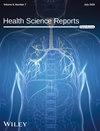In-Hospital Death and Risk Factors in Adults With Influenza in Spain (2016–2022): A Cross-Sectional Study With Focus on Older Patients
Abstract
Background and Aims
Influenza mortality rates varying across different populations. This study aims to assess influenza lethality in hospitalized adults (≥ 15 years) and identify key risk factors according to age.
Methods
We designed a retrospective study at Dr. Balmis General University Hospital (Alicante, Spain), including patients hospitalized for influenza from 2016 to 2022. In-hospital death was expressed as the case fatality rate (CFR). Variables yielding a p value under 0.1 on univariable analysis were included in the multivariable logistic regression model to identify risk factors for lethality.
Results
Of 1613 patients admitted for influenza (incidence 86 per 10,000 admissions), 96 died (CFR 5.95%). Lethality increased with age, reaching 8.4% in patients aged 80–89 years and 19.5% in those over 90. In all of the cohort, risk factors were age, dementia, respiratory failure, influenza pneumonia, and sepsis, while treatment with oseltamivir acted as a protective factor. In patients < 80 years of age, risk factors were neoplasia, respiratory failure, and influenza pneumonia, whereas oseltamivir treatment was a protective factor. In patients 80 years (n = 554; 34.3%), the risk of mortality increased with age, dementia, respiratory failure, noninfluenza pneumonia, and sepsis.
Conclusion
Influenza deaths increase with age; this relationship is accentuated in people aged 80 or older. Respiratory failure was the main risk factor in all patients hospitalized for influenza. Treatment with oseltamivir protected patients (especially those < 80 years) against deaths. Patients < 80 years-old carried a higher risk of death if they had a neoplasia, whereas in ≥ 80 patients, the risk was associated with dementia and noninfluenza pneumonia.


 求助内容:
求助内容: 应助结果提醒方式:
应助结果提醒方式:


